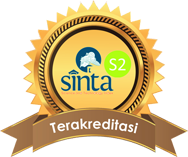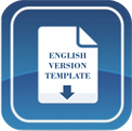Problem-Based Learning with Multilevel Representation: A Strategy to Master the Ionic Equilibrium in Solution Concepts
DOI:
https://doi.org/10.15575/jtk.v7i1.10746Keywords:
ionic equilibrium in solution, multilevel representation, PBL modelAbstract
Mastery of abstract chemistry concepts requires learning strategies to facilitate students to make mental imagery to the submicroscopic level. This study aims to analyze the differences in students' mastery of the ionic equilibrium in salt solutions concept by applying the Problem-Based Learning (PBL) model with multilevel representation. The study applied a quasi-experimental method with a pretest-posttest non-equivalent control group design. The research samples were 61 students of natural science 11th grade SMAN 6 Banjarmasin, which were determined by random cluster sampling. This test instrument is in the form of reasoned-multiple choice with a Content Validity Ratio (CVR) score of 1 (valid), reliability score of 0.96 (very high), difficulty index is moderate to difficult, distinguishing power is moderate to good, and sensitivity item is a sensitive category. Data were analyzed inferentially using an unpaired ttest. This research found that the PBL model with multilevel representation increased the students’ thinking ability at Higher Order Thinking Skills (HOTS) levels. The student's mastery of the ionic equilibrium in salt solutions concept learned by using the PBL model with multilevel representation was better than by using the PBL model.
References
Arends, R. I. (2012). Learning to Teach. New York: Mc. Graw-Hill Companies.
Arikunto, S. (2018). Dasar-Dasar Evaluasi Pendidikan. Jakarta: Bumi Aksara.
Azzajjad, M. F., Ahmar, D. S., & Syahrir, M. (2020). The effect of animation media in discovery learning model on students’ representation ability on chemical equilibrium materials. Journal of Applied Science, Engineering, Technology, And Education, 2(2), 204-209. https://doi.org/10.35877/454RI.asci22125
Barke, H-D, Harsch G, & Schmid S. (2012). Essentials of Chemical Education. Verlag Berlin Heidelberg: Springer.
Boncel, W., Enawaty, E., & Sartika, R. P. (2017). Deskripsi kesalahan siswa dalam menyelesaikan soal-soal hidrolisis garam di kelas XI IPA SMA Katolik Talino. Jurnal Pendidikan dan Pembelajaran Khatulistiwa, 6(12), 1-7. retrieved from https://jurnal.untan.ac.id/index.php/jpdpb/article/view/23059
Chandrasegaran, A. L., Treagust, D. F., & Mocerino, M. (2007). The development of a two-tier multiple-choice diagnostic instrument for evaluating secondary school students' ability to describe and explain chemical reactions using multiple levels of representation. Chemistry Education Research and Practice, 8(3), 293-307. http://doi.org/10.1039/B7RP90006F.
Chen, X., de Goes, L. F., Treagust, D. F., & Eilks, I. (2019). An analysis of the visual representation of redox reactions in secondary chemistry textbooks from different chinese communities. Education Sciences, 9(1), 42. https://doi.org/10.3390/educsci9010042
Cindiana, D., Hairida, & Ulfah, M. (2020). Deskripsi kemampuan peserta didik menyelesaikan soal HOTS materi hukum dasar kimia SMA Negeri Pontianak. Jurnal Pendidikan dan Pembelajaran Khatulistiwa, 9(3), 1-9. Retrieved from https://jurnal.untan.ac.id/index.php/jpdpb/article/view/40291 91.
Cohen, R. J & Swerdlik, M. E. (2010). Psychological Testing and Assessment: An Introduction to Test and Measurement. (7th Ed.). New York, NY: McGraw Hill.
Darmiyanti, W., Rahmawati, Y., Kurniadewi, F., & Ridwan, A. (2017). Analisis model mental siswa dalam penerapan model pembelajaran Learning Cycle 8E pada materi hidrolisis garam. Jurnal Riset Pendidikan Kimia, 7(1), 38-51. https://doi.org/10.21009/JRPK.071.06
Demirdöğen, B. (2017). Examination of chemical representations in Turkish high school chemistry textbooks. Journal of Baltic Science Education, 16(4), 472-499. https://doi.org/10.33225/jbse/17.16.472
Desriyanti, R. D., & Lazulva. (2016). Penerapan Problem Based Learning Pada Pembelajaran Konsep Hidrolisis Garam Untuk Meningkatkan Hasil Belajar Siswa. Jurnal Tadris Kimiya, 1(2), 70-78. http://journal.uinsgd.ac.id/index.php/tadris-kimiya/article/viewFile/1247/884
Gkitzia, V., Salta, K., & Tzougraki, C. (2011). Development and application of suitable criteria for the evaluation of chemical representations in school textbooks. Chemistry Education Research and Practice, 12, 5-14. https://doi.org/10.1039/C1RP90003J
Gkitzia, V., Salta, K., & Tzougraki, C. (2020). Students’ competence in translating between different types of chemical representations. Chemistry Education Research and Practice, 21(1), 307-330. https://doi.org/10.1039/C8RP00301G
Gündüz, A. Y., Alemdağ, E., Yaşar, S. & Erdem, M. (2016). Design of a Problem-Based Online Learning Environment and Evaluation of its Effectiveness. The Turkish Online Journal of Educational Technology, 15(3), 49-57. Retrieved from https://eric.ed.gov/?id=EJ1106369
Hake, R. R. (2002) Relationship of individual student normalized learning gains in mechanics with gender, high-school physics, and pretest scores on mathematics and spatial visualization. Physics education research conference. 8(1), 1-14. Retrieved from https://physics.indiana.edu/~hake/PERC2002h-Hake.pdf
Hofstein, A., & Lunetta, V. N. (2004). The laboratory in science education: Foundations for the twentyâ€first century. Science education, 88(1), 28-54. https://doi.org/10.1002/sce.10106
Ibrahim, M., & Jamaludin, K. A. (2019). The roles of teacher and students via blended problem-based learning: Improving students mastery of three representation levels of chemistry. EDUCATUM Journal of Science, Mathematics and Technology, 6(2), 9-21. https://doi.org/10.37134/ejsmt.vol6.2.2.2019
Jaber, L. Z., & BouJaoude, S. (2012). A macro-micro–symbolic teaching to promote relational understanding of chemical reactions. International Journal of Science Education, 34(7), 973-998. https://doi.org/10.1080/09500693.2011.569959
Johnstone, A. H. (1991). Why is science difficult to learn? Things are seldom what they seem. Journal of Computer Assisted Learning, 7(2), 75–83. https://doi.org/10.1111/j.1365-2729.1991.tb00230.x
Kelly, R. M., Barrera, J. H., & Mohamed, S. C. (2010). An analysis of undergraduate general chemistry students’ misconceptions of the submicroscopic level of precipitation reactions. Journal of Chemical Education, 87(1), 113-118. https://doi.org/10.1021/ed800011a
Khaldun, I., Hanum, L., & Utami, S. D. (2019). Pengembangan soal kimia higher order thinking skills berbasis komputer dengan wondershare quiz creator materi hidrolisis garam dan larutan penyangga. Jurnal Pendidikan Sains Indonesia (Indonesian Journal of Science Education), 7(2), 132-142. https://doi.org/10.24815/jpsi.v7i2.14702
Kiswandari & Ridwan, A. (2020). Analysis of students' mental models through POE (predict observe explain) method in salt hydrolysis topic. Jurnal Tadris Kimiya, 5(1), 80-90. https://doi.org/10.15575/jtk.v5i1.5681
Kurnaz, M. A., & Arslan, A. S. (2014). Effectiveness of multiple representations for learning energy concepts: a case of Turkey. Procedia Social and Behavioral Sciences, 116, 627-632. https://doi.org/10.1016/j.sbspro.2014.01.269
Mahaputra, A. H., Martiningsih, N. G. A. G. E., & Javandira, C. (2016). Pengaruh Pemberian Pupuk Za Terhadappertumbuhan Dan Hasiltanaman Sawi (brassisca Juncea L.). Agrimeta, 6(11), 89896. Retrieved from https://www.neliti.com/id/publications/89896/pengaruh-pemberian-pupuk-za-terhadappertumbuhan-dan-hasiltanaman-sawibrassisca-j
Martiasari, Y., Abidin, Z., & Lismaya, L. (2016). Penerapan model pembelajaran problem based learning berbasis multi representasi terhadap pemahaman konsep siswa. Quagga: Jurnal Pendidikan dan Biologi, 8(2), 10-18. Retrieved from https://journal.uniku.ac.id/index.php/quagga/article/view/829
Milenkovic, D. D., Segedinac, M. D., & Hrin, T. N. (2014). Increasing high school students chemistry performance and reducing cognitive load through an instructional strategy based on the interaction of multiple levels of knowledge representation. Journal of Chemical Education, 91(9),1409-1416. https://doi.org/10.1021/ed400805p
Nahadi, N., Firman, H., & Kurniadi, H. (2018). Development and validation of chemistry virtual test based multiple representations. Journal of Education and Learning, 12(1), 44-51. https://dx.doi.org/10.11591/edulearn.v12i1.6963
O’Keefe, P. A., Letourneau, S. M., Homer, B. D., Schwartz, R. N., & Plass, J. L. (2014). Learning from multiple representations: an examination of fixation patterns in a science simulation. Computers in Human Behavior, 35, 234-242. https://doi.org/10.1016/j.chb.2014.02.040
Oliver-Hoyo, M., & Babilonia-Rosa, M. A. (2017). Promotion of spatial skills in chemistry and biochemistry education at the college level. Journal of Chemical Education, 94(8), 996-1006. https://doi.org/10.1021/acs.jchemed.7b00094
Pavlin, J., Glazˇar, S. A., Slapnicˇar, M., & Devetak, I. (2019). The impact of students' educational background, interest in learning, formal reasoning and visualisation abilities on gas context-based exercises achievements with submicro-animations. Chemistry Education Research and Practice, 20, 633-649. https://doi.org/10.1039/C8RP00189H
Purwanto, N. (2002). Prinsip-Prinsip dan Tehnik Evaluasi Pengajaran. Bandung: Remaja Rosdakarya.
Rahmawati, T., Utami, L. & Refelita, F. (2019). Perbandingan model problem based learning dan inkuiri terbimbing terhadap keterampilan berpikir kritis siswa. Jurnal Tadris Kimiya, 4(1), 21-32. https://doi.org/10.15575/jtk.v4i1.4329
Rakhmawan, A., Firman, H., Redjeki, S., & Mulyani, S. (2018). Contribution of logical thinking ability to students achievement in three level ofrepresentations in chemical dynamic materials. Jurnal Penelitian dan Pembelajaran IPA, 4(2), 116-126. http://dx.doi.org/10.30870/jppi.v4i2.4102
Santos, V. C., & Arroio, A. (2016). The representational levels: Influences and contributions to research in chemical education. Journal of Turkish Science Education, 13(1), 3-18. Retrieved from https://www.researchgate.net/publication/301509027_The_representational_levels_Influences_and_contributions_to_research_in_chemical_education
Savitri, R. W., Susilaningsih, E., & Harjono. (2019). Analisis ketercapaian kompetensi pengetahuan peserta didik melalui pembelajaran Predict, Observe, Explain. Jurnal Inovasi Pendidikan Kimia, 13(2), 2395-2403. Retrieved from https://journal.unnes.ac.id/nju/index.php/JIPK/article/view/15152
Sholahuddin, A. (2015). In-depth learning by exploring the local science issues through @UnESa-GaIn strategy. Banjarmasin: Wahana Jaya Abadi. Retrieved from http://eprints.ulm.ac.id/4174/
Sugiyono. (2018). Metode penelitian kuantitatif, kualitatif dan R&D. Jakarta: Alfabeta.
Sunyono, S., & Meristin, A. (2018). The effect of multiple representation-based Learning (MRL) to increase students' understanding of chemical bonding concepts. Jurnal Pendidikan IPA Indonesia, 7(4), 399-406. https://doi.org/10.15294/jpii.v7i4.16219
Sunyono, S., & Sudjarwo, S. (2018). Mental Models of Atomic Structure Concepts of 11th Grade Chemistry Students. Asia-Pacific Forum on Science Learning and Teaching 19(1). Retrieved from https://www.eduhk.hk/apfslt/download/v19_issue1_files/sunyono.pdf
Sunyono, S., Yuanita, L., & Ibrahim, M. (2015). Mental models of students on stoichiometry concept in learning by method based on multiple representation. The Online Journal of New Horizons in Education (TOJNED), 5(2), 30-45. Retieved from https://www.tojned.net/journals/tojned/articles/v05i02/v05i02-05.pdf
Tima, M. T., & Sutrisno, H. (2018). Effect of using problem-solving model based on multiple representations on the students' cognitive achievement: Representations of chemical equilibrium. Asia-Pacific Forum on Science Learning & Teaching 19(1). https://www.eduhk.hk/apfslt/download/v19_issue1_files/tima.pdf
Treagust, D. F. (2018). Education research highlights in mathematics, science and technology: The importance of multiple representations for teaching and learning science. Iowa State University: ISRES. Retrieved from https://www.isres.org/education-research-highlights-in-mathematics-science-and-technology-2018-6-b.html
Wicaksono, A. T. (2016). Tinjauan pemahaman konsep larutan asam dan basa pada tingkat makroskopik dan tingkat mikroskopik siswa kelas XI IPA SMA Negeri 1 Batu. Jurnal Tarbiyah (Jurnal Ilmiah Kependidikan), 5(2), 1-6. http://dx.doi.org/10.18592/tarbiyah.v5i2.980
Wiyarsi, A., Sutrisno, H., & Rohaeti, E. (2018). The effect of multiple representation approach on students’ creative thinking skills: A case of ‘Rate of Reaction’topic. Journal of Physics: Conference Series 1097(1), 012054. IOP Publishing. Retrieved from https://iopscience.iop.org/article/10.1088/1742-6596/1097/1/012054
Yakmaci-Guzel, B., & Adadan, E. (2013). Use of multiple representations in developing preservice chemistry teachers understanding of the structure of matter. International Journal of Environmental & Science Education, 8(1), 109-130. Retrieved from http://files.eric.ed.gov/fulltext/EJ1008597.pdf
Downloads
Published
How to Cite
Issue
Section
Citation Check
License
Authors who publish with this journal agree to the following terms:
- Authors retain copyright and grant the journal right of first publication with the work simultaneously licensed under a Creative Commons Attribution-ShareAlike that allows others to share the work with an acknowledgement of the work's authorship and initial publication in this journal.
- Authors are able to enter into separate, additional contractual arrangements for the non-exclusive distribution of the journal's published version of the work (e.g., post it to an institutional repository or publish it in a book), with an acknowledgement of its initial publication in this journal.
- Authors are permitted and encouraged to post their work online (e.g., in institutional repositories or on their website) prior to and during the submission process, as it can lead to productive exchanges, as well as earlier and greater citation of published work (See The Effect of Open Access).








